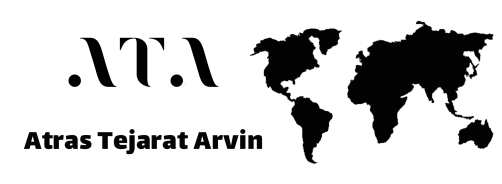

International marketing, or global marketing, refers to the application of marketing principles beyond national borders by companies and businesses. Today, international markets have undergone significant transformations due to advancements in techniques, methods, and trade practices. These changes are strengthened and completed through advanced technologies and developing economic relationships among companies and organizations involved in international trade.
At its simplest level, international marketing involves a company making decisions about its marketing mix beyond its home country. At its most complex, it can include establishing production units and coordinating marketing strategies globally.
Another definition states that international marketing involves conducting business activities to deliver a company’s goods and services to customers or consumers in more than one country, aiming for profitability.
The steps and principles of marketing are standardized and applicable across all markets and countries. However, the main distinction between domestic and international marketing lies in their scope of operation. This key difference introduces new aspects to international marketing, such as:
- Understanding the conditions of other countries.
- Adopting suitable strategies for entering different countries and markets.
- Taking specific actions in markets that may present greater uncertainty and higher risks for foreign companies.
Scope of International Marketing
The scope of marketing is generally divided into two categories:
Controllable Factors
Includes policies related to products and services, sales programs, pricing, and distribution. These are part of the company's marketing mix, which is directly under the company’s control and planning. The company can design and implement its marketing mix based on competitive market conditions, legal restrictions, consumer preferences, and its strategy.
Uncontrollable Factors
Divided into internal and external categories:
Internal Factors: Includes government policies, legal structures, and economic conditions, which are beyond the company’s control.
External Factors: These vary across countries and may even be contradictory. Examples include political and economic conditions, technological levels, geography, and cultural factors.
Analyzing the International Environment
Economic Environment
Among all uncontrollable factors in international marketing, the economic environment holds significant importance. The following aspects are crucial for marketers:
Economic Geography
Includes studying geographic factors such as climate, population, industries, and natural resources, as these influence the needs of society and are essential for international marketing.
Global Demographic Trends
Evaluates potential consumer demand by studying population size, growth rates, demographic pyramids, and the urban-rural population ratio, which help determine the demand for goods and services in each country.
Economic Development Stages:
Understanding a country's stage of economic development helps marketers assess its progress and identify investment opportunities.
Walt Rostow’s Development Model outlines five stages:
Traditional Society
Preconditions for Take-off
Take-off
Maturity
Mass Consumption
Key Economic Indicators
Companies rely on economic indicators to assess the economic conditions of different countries. These indicators are provided by organizations like Chambers of Commerce, United Nations, World Bank, International Monetary Fund, and the Organization for Economic Cooperation and Development (OECD). Key indicators include:
- Gross National Product (GNP)
- Income Distribution
- Exchange Rates
- Inflation Rates
- Bank Interest Rates
- Foreign and Domestic Investment Volume
- Per Capita Consumption
Cultural Factors
Markets in different countries are influenced by diverse factors, with culture being one of the most important. Successful international marketing relies on a deep understanding of the cultural differences across countries and regions.
Culture is defined as a complex whole that includes knowledge, beliefs, art, ethics, customs, and any habits or capabilities acquired by individuals as members of society. Culture significantly impacts consumer behavior, making it essential for companies to recognize these differences when designing and implementing marketing strategies.
Examples
Language Differences: A slogan may carry different meanings in various languages.
Cultural Needs: Products can serve different purposes across cultures. For instance, a sewing machine might be a useful hobby tool in one culture but a vital means of survival for an entire family in another.
Understanding such cultural nuances is critical to achieving success in international marketing.
Components of Culture
Beliefs: A set of mental processes influencing individuals' perceptions and evaluations of goods and services.
Values: Subjective criteria used by customers to identify appropriate behavior. Values are generally stable over time and widely accepted by the majority in a given market.
Customs: Observable behavioral patterns that are socially agreed upon and accepted in specific situations. Customs are often noticeable during significant life events, such as births, weddings, funerals, or cultural occasions like Nowruz, Ramadan, or Mother's Day.
Factors Influencing Culture
To understand culture, all its aspects must be studied. These include:
Technology and Material Culture
Social Organizations and Institutions
Education
Values and Mindsets
Religion
Language
Aesthetics
Laws and Politics
Hofstede's Four-Dimensional Model
Geert Hofstede, a renowned researcher, identified cultural differences that influence organizational and consumer behavior. He proposed four key cultural dimensions:
Individualism vs. Collectivism
- Does a society value individual responsibility or group-oriented approaches?
Power Distance:
- Refers to the extent to which power inequality is accepted. For instance, power distance is higher in Arab countries and Iran compared to Europe or the USA.
Uncertainty Avoidance:
- Societies with high uncertainty avoidance tend to favor regulations and long-term employment stability.
Masculinity vs. Femininity:
- Masculine cultures focus on competitiveness, ambition, and material success, while feminine cultures emphasize interpersonal relationships and quality of life.
Key Insight: Success in international marketing depends on aligning marketing decisions with cultural norms and expectations.
Political and Legal Environment
Countries vary in their political stances and legal frameworks, which affect how foreign companies operate within their borders. For example:
Political Stability: A stable environment ensures consistent policies even with government changes.
Legal Systems:
Legal frameworks can be categorized into four main types:
1. Islamic Law: Based on interpretations of the Quran.
2. Civil Law: Codified legal systems.
3. Common Law: Rooted in tradition and precedents.
4. Socialist Law: Derived from Marxist ideologies.
Risk Mitigation Strategies:
- Joint ventures with local partners.
- Licensing agreements.
- Localization by hiring local managers or transferring shares to local stakeholders.
Market Entry Strategies
Planning how to enter a target market is crucial. Entry strategies are classified into:
Direct Investment:
- Establishing production units.
- Forming joint ventures.
Indirect Investment:
- Exporting.
- Licensing.
- Franchising.
Key Considerations:
- Risk level.
- Investment amount.
- Fixed and variable costs.
- Market share potential.
The right strategy ensures competitive advantage and sustainable market presence.
Marketing Mix
Product and Service Strategy
- Many professionals advocate for adapted product strategies to address unique market needs.
- Adjustments can include changes in:
- Packaging, color, size, or design to match local preferences.
- Accompanying services like warranties or distribution methods.
In contrast, global product strategies offer a uniform product worldwide, benefiting from:
- Economies of scale.
- Streamlined planning and control.
- Lower production costs.
Product Life Cycle
Consumer adoption of new products varies across countries due to differences in income levels and attitudes toward innovation. For instance, a product that saturates one market may still grow in another.
Example: The Peugeot 206 car from France gained immense popularity in Iran long after its initial launch.
Product Naming
Names deeply rooted in language and culture may require adaptation.
Coca-Cola: Recognized globally with a consistent name.
Visa: Changed from Americard to accommodate global markets.
Promotion Strategies
Promotion refers to communication programs aimed at influencing consumers. The primary tools include:
1. Advertising
2. Personal Selling
3. Sales Promotion
4. Public Relations
5. Direct Marketin
Challenges in International Communication:
Language Barriers: Slogans must be accurately translated, considering local dialects and nuances.
Cultural Differences: A message effective in one culture might fail in another.
Media Preferences: Advertising mediums vary in effectiveness across regions.
Legal Restrictions: Varying regulations affect what can be advertised.
Global Advertising:
Success depends on factors like:
- Uniform product benefits across markets.
- Similar product life cycle stages globally.
- Consistent competitive conditions.
Pricing in International Markets
Pricing is the only element of the marketing mix that generates revenue, making it a critical decision area.
Factors Affecting International Pricing:
1.Organizational Factors:
- Costs (packaging, transport, customs, taxes, etc.).
2. Market Factors:
- Income levels and competitive landscape.
3. Environmental Factors:
- Inflation, exchange rates, and government controls.
Global vs. Local Pricing:
- Some companies use lower prices under new brands for specific markets, e.g., Sony’s Aiwa brand.
- Others maintain consistent global pricing for uniformity.
Distribution in International Markets
Products must reach consumers through effective distribution channels.
Factors Influencing Distribution:
1. Economic development stages.
2. Consumer income levels.
3. Infrastructure quality.
4. Legal systems.
International Distribution Strategies:
The ideal strategy balances:
- Market coverage.
- Control over success factors.
- Cost efficiency.
- Cultural alignment.
Example:
Dell simplified its distribution by selling exclusively through the internet and phone, reducing costs significantly while ensuring global reach.
Conclusion
Success in international marketing requires a deep understanding of cultural, political, legal, and economic environments. By aligning strategies with local requirements and leveraging global opportunities, companies can achieve sustainable competitive advantages in international markets.
If You Want a Profitable Business Without Worrying About Exorbitant or Illegal Costs
We recommend getting in touch with us at Ata Trading.
With our extensive experience and wide-ranging connections, we can legally export anything eligible to various countries, ensuring a worry-free and profitable trading experience for you.
Let us handle the complexities of trade while you focus on growing your business.


















